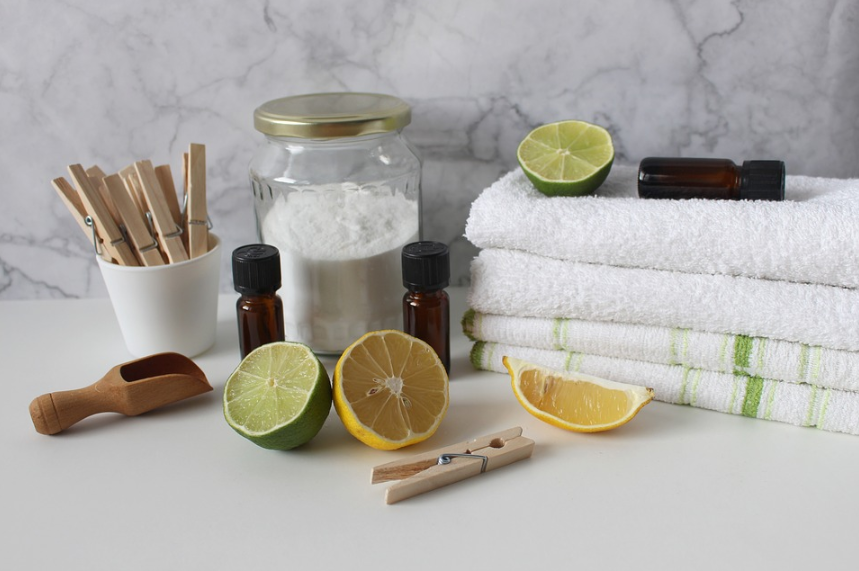Also called sodium bicarbonate, baking soda is the king of grandmother’s eco-friendly household products. From the garden to the home through beauty uses (scrub, deodorant, etc.), its daily applications are multiple. However, as with its companion white vinegar, certain uses of which should be avoided, we sometimes make mistakes with this natural powder. In fact, it is not dangerous, but misuse is not without consequences. Here are the worst uses of bicarbonate to avoid these mistakes on a daily basis. Subtleties that everyone should know about this great classic of chemical-free cleaning products!
Mistake 1: Mixing it with white vinegar

Bicarbonate and alcohol vinegar should only be mixed in two cases: to unclog a pipe and descale it or to remove a stain by the mechanical action of the foaming reaction. The rest of the time, it is better to avoid this mixture where the acid and the base neutralize each other chemically. The mixture of the two then no longer has any effectiveness and will on the contrary destroy their active ingredients, giving simple salt water at the end of the chemical reaction. Needless to say, it’s a hell of a waste! This is particularly to be avoided in products that you keep for a long time such as laundry detergent, dishwashing liquid, spray for all surfaces, etc. Choose one or the other for home maintenance.
Mistake 2: Using it to whiten your laundry

Baking soda is excellent for laundry care. In addition to being a good stain remover, its anti-limescale effect gives it a softening power on clothes. So we don’t do any better at softening rough laundry. Nevertheless, it is absolutely not a bleaching agent ! Indeed, we tend to attribute all the virtues to it, including this one which is ultimately not one of them. This misconception is explained by its properties against scale, also allowing it to limit the tarnishing of linen. Therefore, it helps to preserve the shine and vibrancy of colors like white. However, if the white linen needs bleaching, it will no longer be of any use to you. In this case, use sodium percarbonate (powdered hydrogen peroxide), soda crystals, sorrel salt or even lemon juice for very effective whitening of laundry.
Mistake 3: Using the wrong type of baking soda

There are three types of bicarbonates:
-The technical grade baking soda can be bought in DIY stores and is mainly used in the garden and for household use. On the other hand, he is unfit for consumptionbecause even if it is the same molecule, its purity and quality are less good. Therefore, you should never use it on your skin or on your children.
-There is also the food bicarbonate that we buy in our supermarkets. Food grade bicarbonate can be used on the skin, internally, in the garden and in the household like our pets.
-Finally, the last type is the pharmaceutical bicarbonate which has the same applications as this natural food product, but which is much more expensive.
To avoid mistakes, always check the type of baking soda when purchasing. Food bicarbonate remains the most versatile and economical.
Mistake 4: Overusing bicarbonate every day

From 200 to 300 g, bicarbonate becomes dangerous. Of course, these are huge doses that we rarely ingest on a daily basis in our recipes or our natural remedies. However, it is not always necessary to swallow the whole packet to observe deleterious effects. Indeed, even at normal doses, it can prove dangerous for certain people, particularly due to its high sodium content which can be harmful in daily consumption. Excessive consumption can lead to symptoms such as nausea and vomiting, diarrhea, headaches, swelling of the legs, etc. In the most serious cases, convulsions and kidney failure can occur. Furthermore, it is appropriate not to do not use it every day to whiten your teeth. This can indeed damage tooth enamel.
Mistake 5: Using it for medical treatment or on fragile people

To avoid errors by creating interactions between your medications and bicarbonate, it is better to seek advice from your doctor or pharmacist. Moreover, it is not recommended to use bicarbonate in pregnant women and children under 6 years old. Also be careful in the event of a salt-free diet and hypertension, heart or kidney failure, pulmonary edema, kidney or liver disease, respiratory acidosis or metabolic alkalosis.
Mistake 6: Mistaking it for another white powder

Remember to always label your glass jars or metal boxes. This will prevent you from using caustic soda, very similar to bicarbonate in terms of appearance, but very dangerous and irritating if used incorrectly. Sodium percarbonate is also very similar to baking soda, but cannot be ingested or used on the skin. Beware of confusion!


